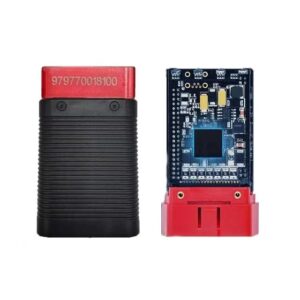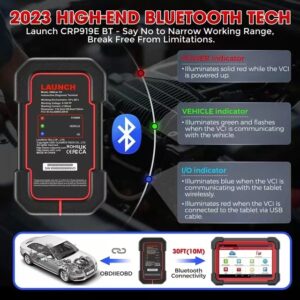Intelligent diagnostic tools leverage the OBD2 protocol to obtain information from a vehicle’s ECU through a multi-step process:
- Physical Connection: The first step involves establishing a physical connection between the diagnostic tool and the vehicle’s OBD-II port. This standardized port is typically located under the dashboard near the driver’s knee area.
- Initiating Communication: Once connected, the diagnostic tool initiates communication with the vehicle’s ECU. It follows the standardized communication protocol defined by OBD2, which ensures compatibility with various car models. This communication protocol dictates the format and language used for data exchange.
- Data Request and Retrieval: The diagnostic tool transmits specific requests to the ECU. These requests might ask for:
- Stored Fault Codes: Codes identifying malfunctions within the vehicle’s systems.
- Live Data Streams: Real-time sensor readings like engine RPM, coolant temperature, oxygen sensor voltage, etc.
- Freeze Frame Data: A snapshot of sensor readings captured when a fault code was triggered.
- Vehicle Identification: Information like Vehicle Identification Number (VIN), model year, and engine specifications.
The ECU processes these requests and retrieves the corresponding information from its memory or by taking real-time sensor readings.
- Data Interpretation and Display: The diagnostic tool receives the data from the ECU and interprets it based on the OBD2 standards. It then presents this information on its user interface in a clear and user-friendly format. This might involve:
- Displaying fault codes with their corresponding descriptions.
- Presenting live data streams in graphs, charts, or numerical values.
- Analyzing freeze frame data to pinpoint the conditions that led to a fault.
- Utilizing the vehicle identification information to provide context and access relevant repair resources.
- Intelligent Features: Modern intelligent diagnostic tools go beyond basic data retrieval. They may leverage additional functionalities like:
- Guided Troubleshooting: Stepping technicians through diagnostic procedures based on retrieved codes and symptoms.
- Repair Information Access: Providing access to online databases with repair manuals, service bulletins, and technical specifications specific to the vehicle.
- Predictive Maintenance: Analyzing data trends to identify potential problems before they cause major breakdowns.
By utilizing the standardized OBD2 protocol and intelligent features, diagnostic tools empower technicians to efficiently diagnose vehicle issues and perform repairs more effectively.



